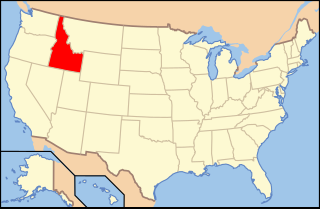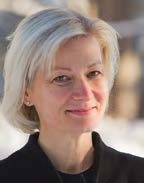
The United States Court of Appeals for the Eighth Circuit is a United States federal court with appellate jurisdiction over the following United States district courts:

The United States Court of Appeals for the Sixth Circuit is a federal court with appellate jurisdiction over the district courts in the following districts:

The United States Court of Appeals for the Seventh Circuit is the U.S. federal court with appellate jurisdiction over the courts in the following districts:

The United States Court of Appeals for the District of Columbia Circuit is one of the thirteen United States Courts of Appeals. The D.C. Circuit has the smallest geographical jurisdiction of any of the U.S. courts of appeals, and it covers only one district court: the U.S. District Court for the District of Columbia. It meets at the E. Barrett Prettyman United States Courthouse in Washington, DC.

Shirley Ann Mount Hufstedler was an American attorney and judge who served as the first U.S. Secretary of Education from 1979 to 1981. She previously served as a U.S. circuit judge of the U.S. Ninth Circuit Court of Appeals from 1968 to 1979.

The United States District Court for the District of Idaho is the Federal district court whose jurisdiction comprises the state of Idaho. Court is held in Boise, Coeur d'Alene, and Pocatello. Cases from the District of Idaho are appealed to the United States Court of Appeals for the Ninth Circuit.
During President Lyndon B. Johnson's presidency, federal judicial appointments played a central role. Johnson appointed Abe Fortas and Thurgood Marshall to the Supreme Court of the United States in just over five years as president.
President Richard Nixon entered office in 1969 with Chief Justice Earl Warren having announced his retirement from the Supreme Court of the United States the previous year. Nixon appointed Warren E. Burger to replace Earl Warren, and during his time in office appointed three other members of the Supreme Court: Associate Justices Harry Blackmun, Lewis F. Powell, and William Rehnquist. Nixon also nominated Clement Haynsworth and G. Harrold Carswell for the vacancy that was ultimately filled by Blackmun, but the nominations were rejected by the United States Senate. Nixon's failed Supreme Court nominations were the first since Herbert Hoover's nomination of John J. Parker was rejected by the Senate.
The nominations made by Lyndon B. Johnson to the Supreme Court of the United States are unusual in that Johnson appeared to have had specific individuals in mind for his appointments and actively sought to engineer vacancies on the Court to place those individuals on the court.
Although he was president for less than three years, John F. Kennedy appointed two men to the Supreme Court of the United States: Byron White and Arthur Goldberg. Given the advanced age of Associate Justice Felix Frankfurter at the time of Kennedy's inauguration, speculation abounded over potential Kennedy nominations to the Supreme Court from the start of his presidency.

Robert Boochever was a United States circuit judge of the United States Court of Appeals for the Ninth Circuit and a justice of the Alaska Supreme Court.

Morgan Brenda Christen is an American lawyer and jurist who serves as a U.S. circuit judge of the U.S. Court of Appeals for the Ninth Circuit. She previously served as a state court judge on the Alaska Supreme Court from 2009 to 2012 and on the Alaska Superior Court from 2002 to 2009.

During his two terms in office, President Harry S. Truman appointed four members of the Supreme Court of the United States: Chief Justice Fred M. Vinson, Associate Justice Harold Burton, Associate Justice Tom C. Clark, and Associate Justice Sherman Minton.











